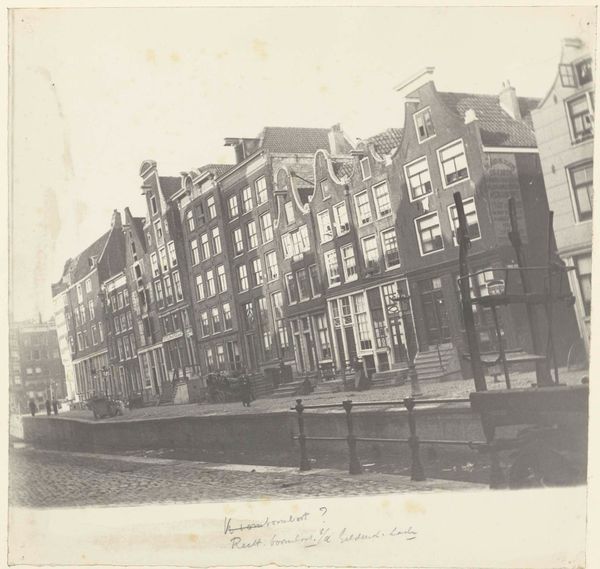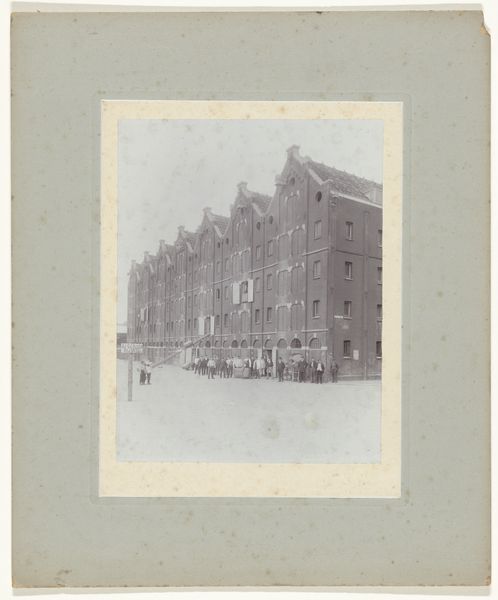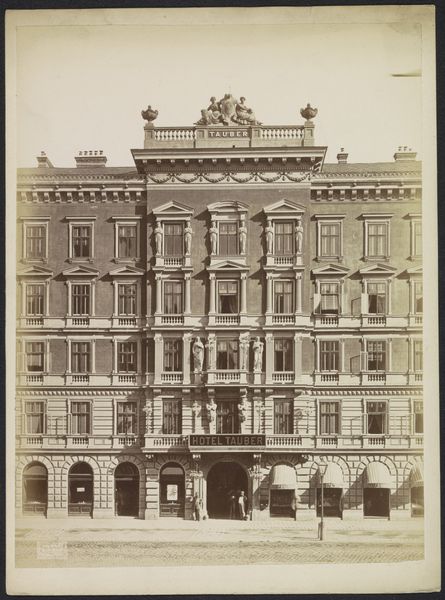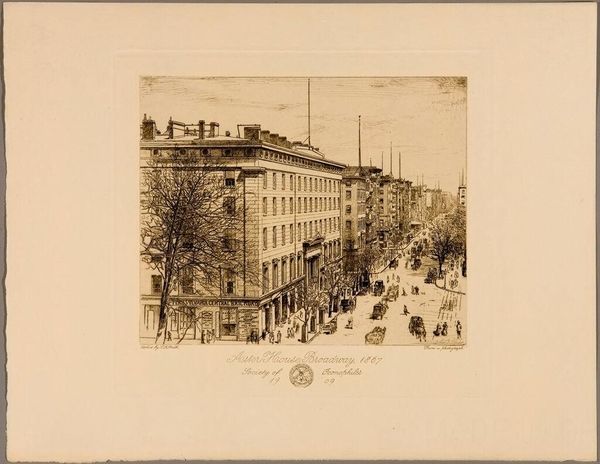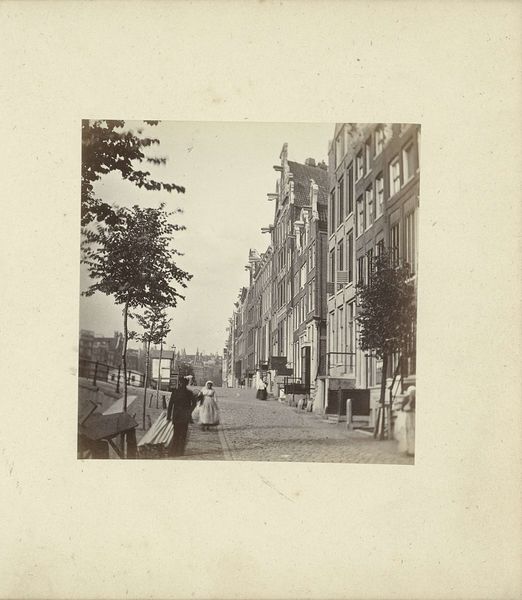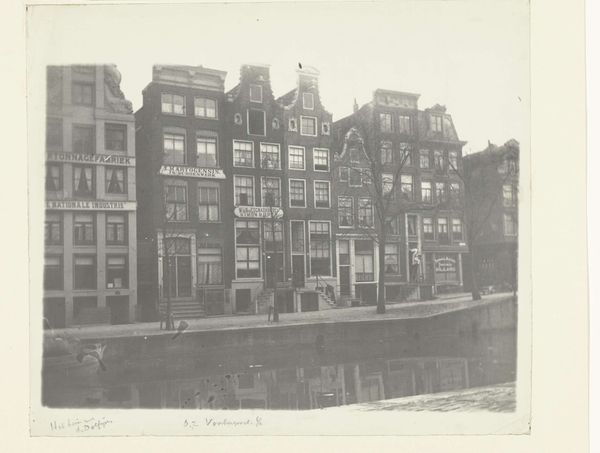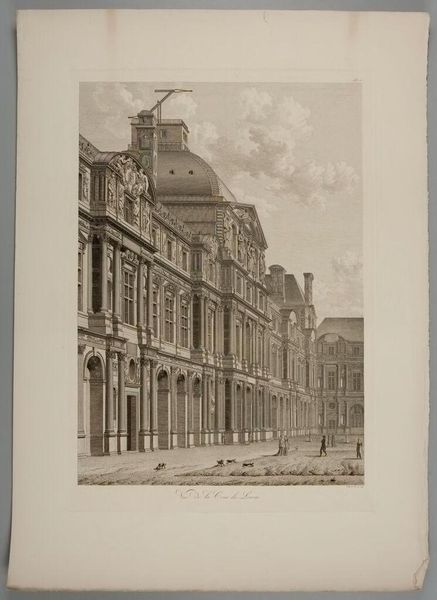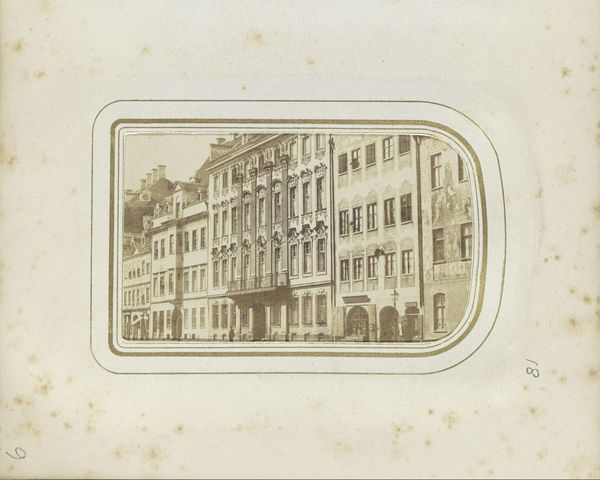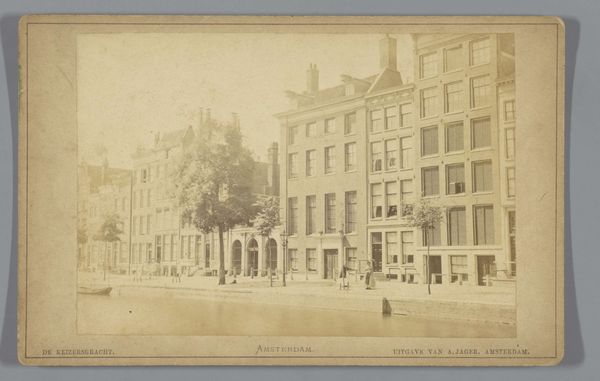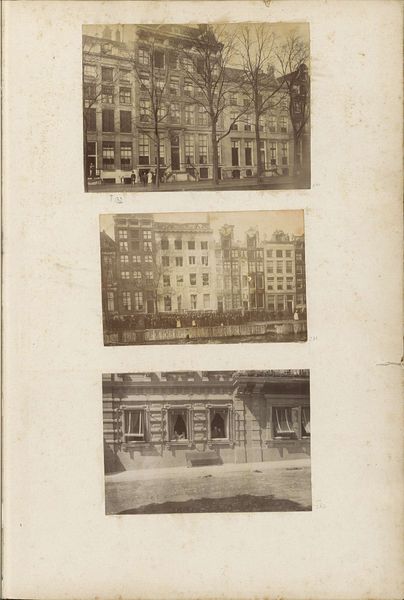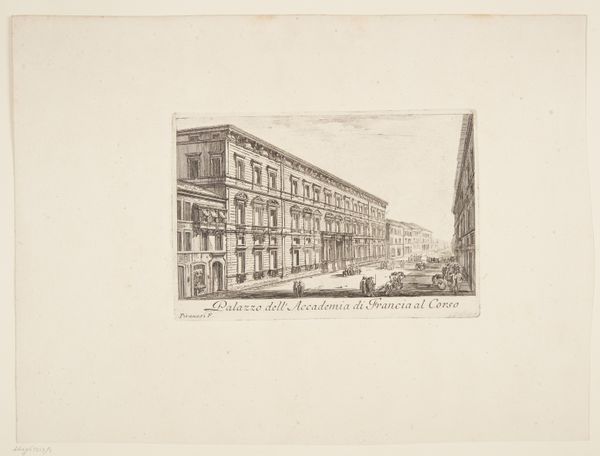
photography, gelatin-silver-print, architecture
#
16_19th-century
#
photography
#
gelatin-silver-print
#
cityscape
#
architecture
#
realism
Dimensions: height 124 mm, width 141 mm
Copyright: Rijks Museum: Open Domain
Curator: This gelatin-silver print, titled "Rijksmuseum, Trippenhuis, Amsterdam," was taken by Pieter Oosterhuis sometime before 1860. Editor: It has a muted, sepia quality, very evocative of early photography. Look at how meticulously the photographer captured the linear aspects of the buildings with an almost forensic intensity. The photograph oozes a quiet authority. Curator: Precisely, this image allows us a glimpse into the relationship between architectural ambition and civic identity. Notice the neoclassical façade of the Trippenhuis contrasted against the more modest row houses. This wasn't just a building; it was a statement, reflecting the aspirations of a burgeoning national museum and the role it played within the developing urban fabric of Amsterdam. Editor: Absolutely. I am also drawn to the tactile element, how Oosterhuis used the gelatin-silver process. Think about it—each print would be subtly unique. You are handling this material substance to represent something as monumental and supposedly 'permanent' as a museum, pointing to the labor of creation, making the invisible labor, well, visible. Curator: And how the site itself shaped its future, in some ways. The Trippenhuis actually became too small to house the national collection, hence the construction of the current Rijksmuseum later in the 19th century. This photograph, in essence, freezes a pivotal moment of that institutional and artistic transition. Editor: Looking at the composition—the way the canal acts as a kind of mirror reflecting the facades. Consider the technology and the social changes in Amsterdam, a crucial center of photographic practice, that enabled images like these to circulate more widely. It all contributed to new ways of seeing, of perceiving cityscapes, even influencing city planning itself. Curator: In seeing how people saw the museum then and connecting to it today, these images remind us museums are more than walls and artifacts; they’re ever-evolving dialogues between the past and present. Editor: Indeed, thinking about the materiality, the scale of distribution...It invites reflections on the relationship between craftsmanship and large-scale urban change, that persist into the contemporary moment.
Comments
No comments
Be the first to comment and join the conversation on the ultimate creative platform.
